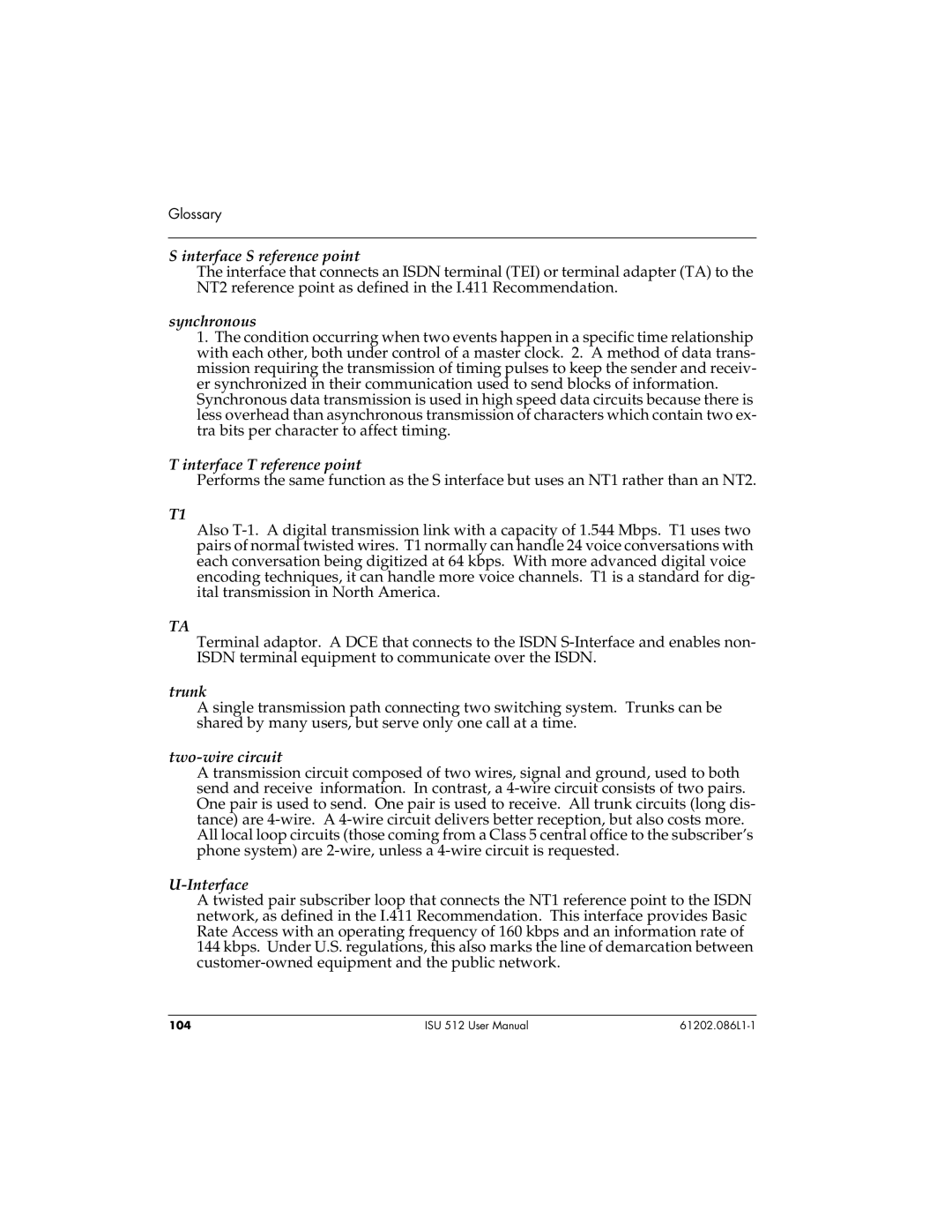
Glossary
S interface S reference point
The interface that connects an ISDN terminal (TEI) or terminal adapter (TA) to the NT2 reference point as defined in the I.411 Recommendation.
synchronous
1.The condition occurring when two events happen in a specific time relationship with each other, both under control of a master clock. 2. A method of data trans- mission requiring the transmission of timing pulses to keep the sender and receiv- er synchronized in their communication used to send blocks of information.
Synchronous data transmission is used in high speed data circuits because there is less overhead than asynchronous transmission of characters which contain two ex- tra bits per character to affect timing.
T interface T reference point
Performs the same function as the S interface but uses an NT1 rather than an NT2.
T1
Also
TA
Terminal adaptor. A DCE that connects to the ISDN
trunk
A single transmission path connecting two switching system. Trunks can be shared by many users, but serve only one call at a time.
two-wire circuit
A transmission circuit composed of two wires, signal and ground, used to both send and receive information. In contrast, a
A twisted pair subscriber loop that connects the NT1 reference point to the ISDN network, as defined in the I.411 Recommendation. This interface provides Basic Rate Access with an operating frequency of 160 kbps and an information rate of 144 kbps. Under U.S. regulations, this also marks the line of demarcation between
104 | ISU 512 User Manual |
